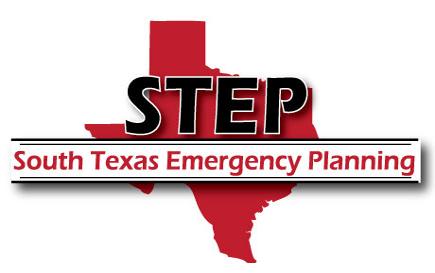



|
Final Report |
|
South Texas Emergency Planning STEP
Christian Barsi : Project Manager/Editor Kristy Nguyen : Project Assistant Manager/GIS Analyst Jordan Hutto : GIS Analyst/Technical Writer Justin McCreight : Web Analyst
Chemical hazard procedures and planning for Victoria County LEPC
December 13th, 2010
Table of Contents
Abstract This report is a final summation of the emergency management planning analysis for the Local Emergency Planning Committee (LEPC) of Victoria County by South Texas Emergency Planning (STEP). This project was developed and created to assist the LEPC in decision-making processes based on the occurrence of a chemical disaster. Under federal regulations, namely Emergency Planning and Community Right-to-Know Act (EPCRA), it is required to establish a comprehensive emergency response system in all communities in the United States. The implementation of GIS aids Victoria County’s Local Emergency Planning Committee (LEPC) through the exchange of data to detect spatial relationships between chemical hazard sites, the environment, transportation networks, and the population of Victoria County to facilitate an efficient evacuation towards safety. In order for STEP to provide emergency management planning through a GIS, the primary goal was to gather data that was relative to the project. This data included street-centerlines, critical infrastructure, population concentrations, and base maps of Victoria County. This data was mainly provided by the Victoria City GIS department and the Victoria County LEPC. To provide further analysis, CHEMgroup provided STEP with data that detailed the location of chemical plants in Victoria County and their inventory of chemicals. With all data collected and processed STEP carried out network analyses to provide tools for the LEPC to aid in the evacuation of certain population concentrations in Victoria County. The final products produced for the LEPC are a digital database which explains where the closest shelter is located to each individual population concentration and maps and graphs that show which critical infrastructures would be affected in the occurrence of a chemical disaster.
|
|
Abstract This report is a final summation of the emergency management planning analysis for the Local Emergency Planning Committee (LEPC) of Victoria County by South Texas Emergency Planning (STEP). This project was developed and created to assist the LEPC in decision-making processes based on the occurrence of a chemical disaster. Under federal regulations, namely Emergency Planning and Community Right-to-Know Act (EPCRA), it is required to establish a comprehensive emergency response system in all communities in the United States. The implementation of GIS aids Victoria County’s Local Emergency Planning Committee (LEPC) through the exchange of data to detect spatial relationships between chemical hazard sites, the environment, transportation networks, and the population of Victoria County to facilitate an efficient evacuation towards safety. In order for STEP to provide emergency management planning through a GIS, the primary goal was to gather data that was relative to the project. This data included street-centerlines, critical infrastructure, population concentrations, and base maps of Victoria County. This data was mainly provided by the Victoria City GIS department and the Victoria County LEPC. To provide further analysis, CHEMgroup provided STEP with data that detailed the location of chemical plants in Victoria County and their inventory of chemicals. With all data collected and processed STEP carried out network analyses to provide tools for the LEPC to aid in the evacuation of certain population concentrations in Victoria County. The final products produced for the LEPC are a digital database which explains where the closest shelter is located to each individual population concentration and maps and graphs that show which critical infrastructures would be affected in the occurrence of a chemical disaster. |
|
|
|
Introduction 1 |
|
Background 1 |
|
Problem Statement 2 |
|
Data 3 - 5 |
|
Methodology 5 - 9 |
|
Results 9 - 15 |
|
Discussion 15 - 20 |
|
Conclusions 21 |
|
References 22 |
|
Appendix I: Metadata 23 - 94 |
|
Appendix II: Contributions 95 - 96 |